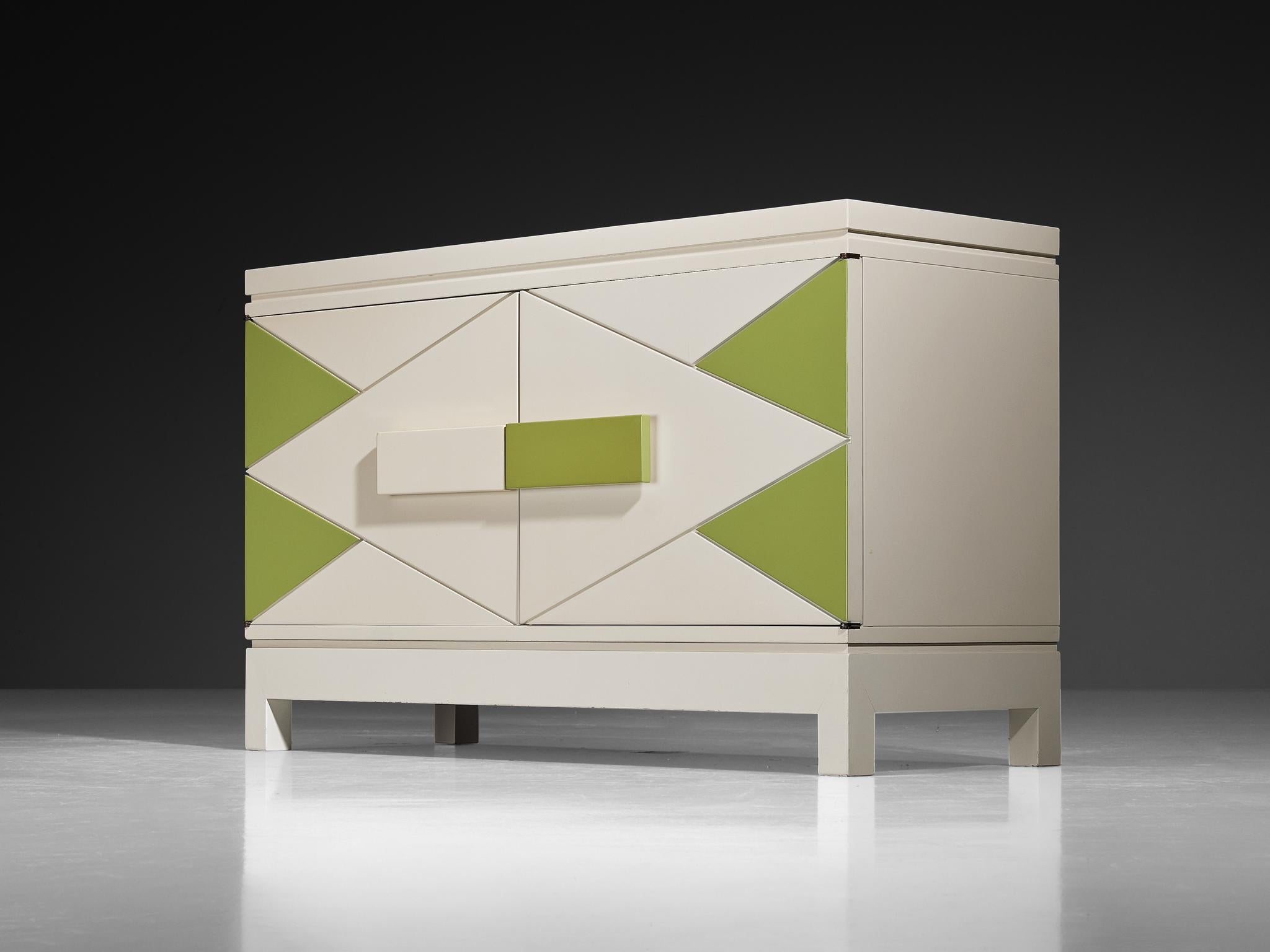
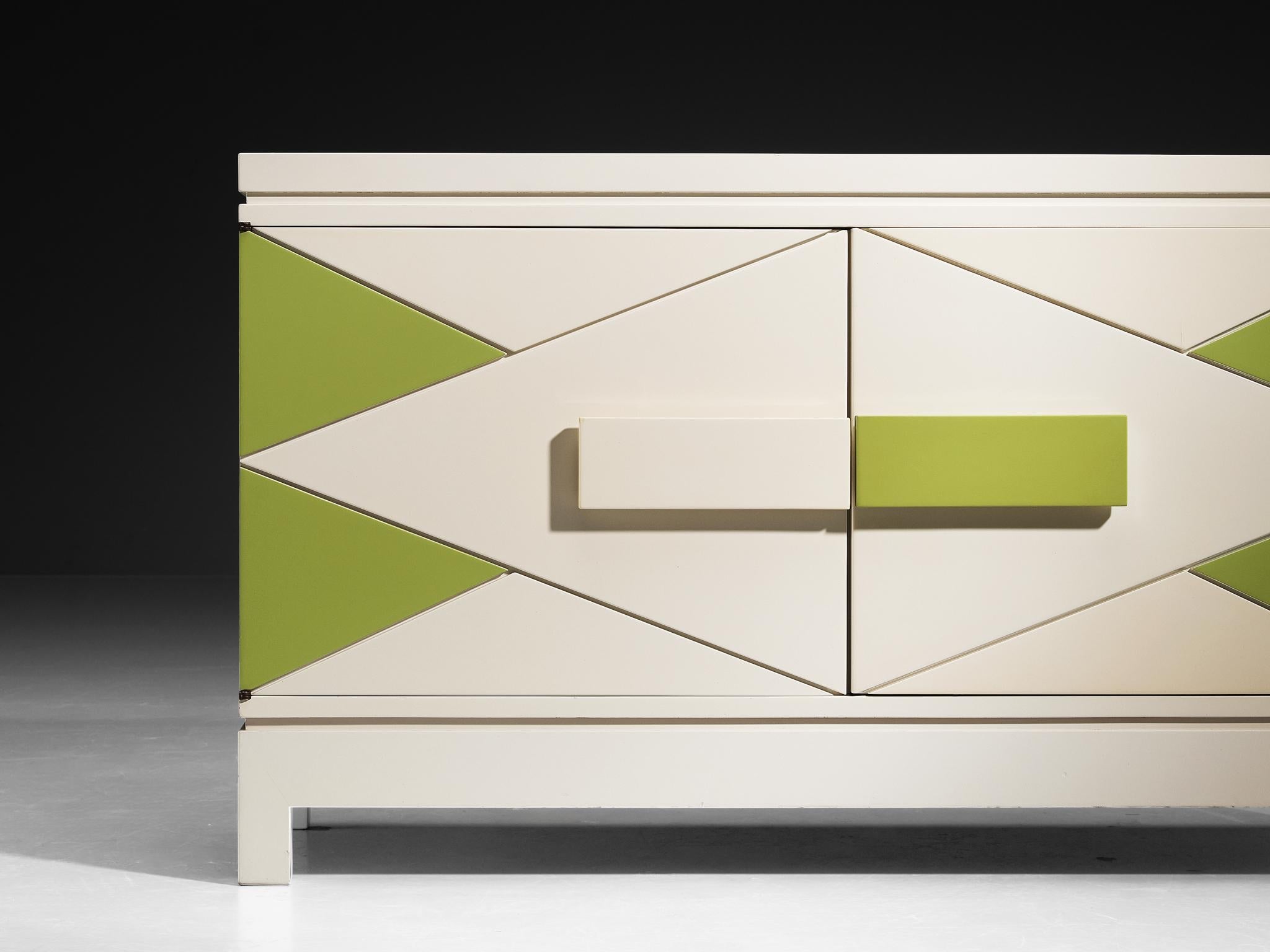
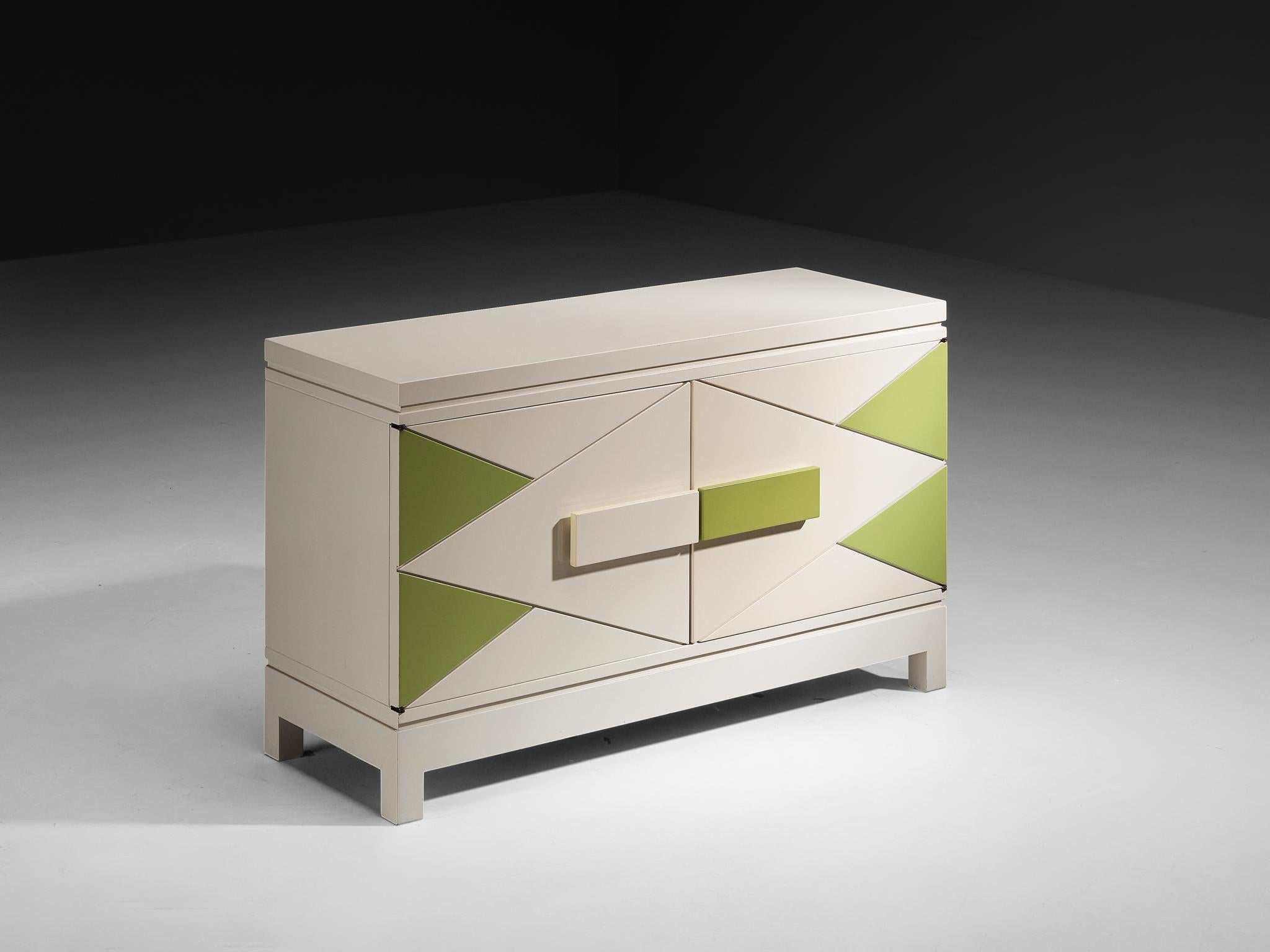
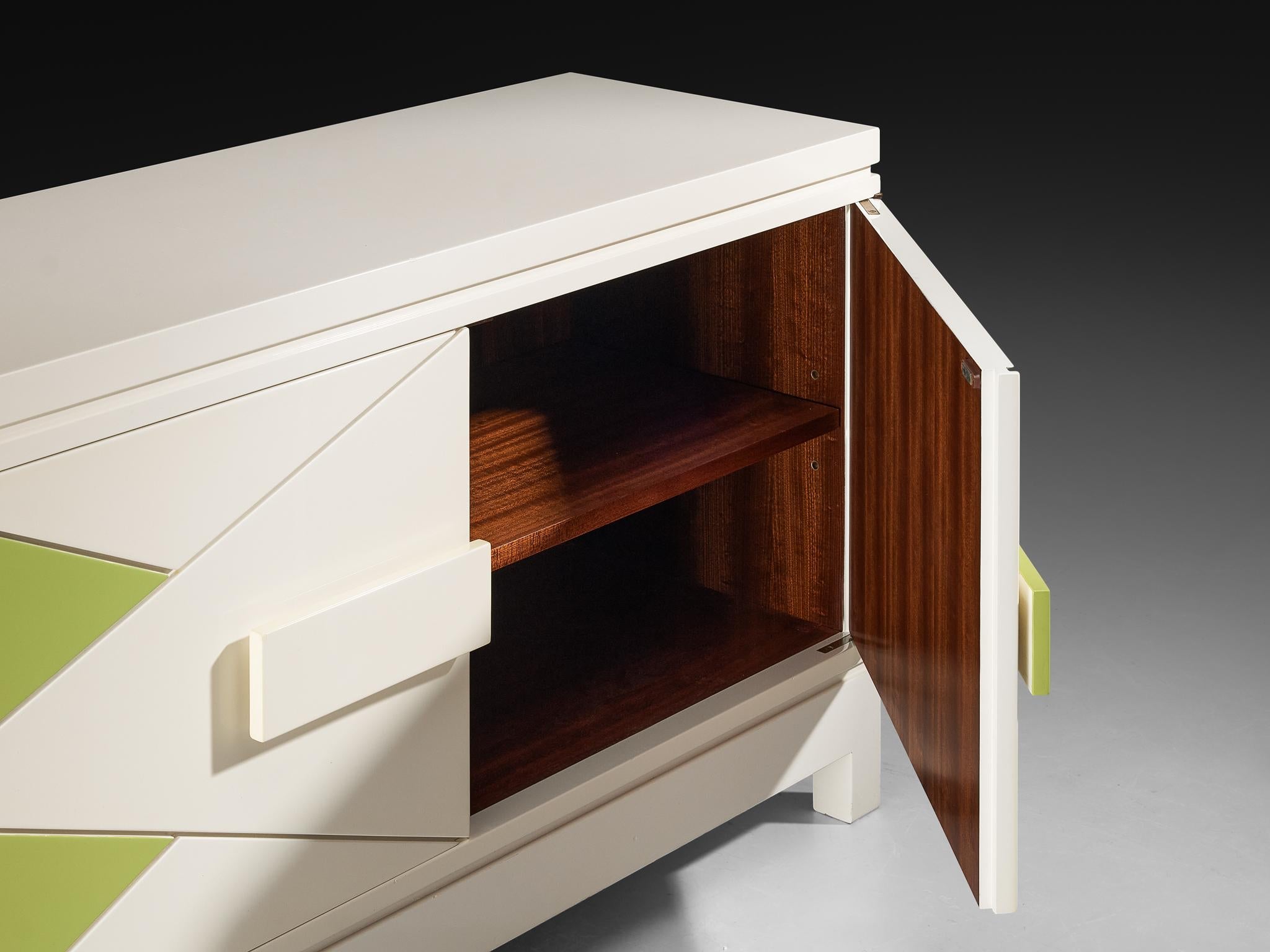
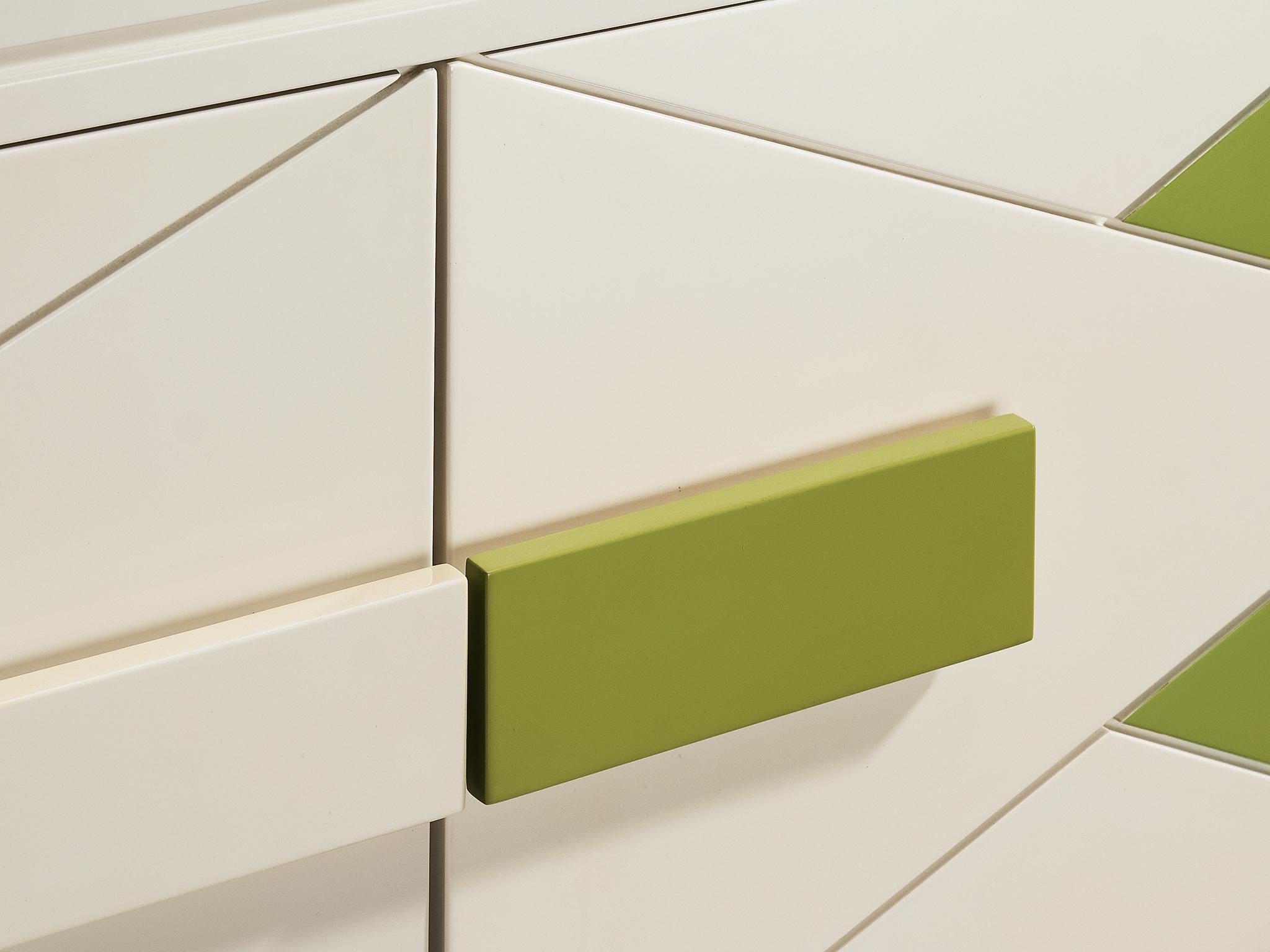
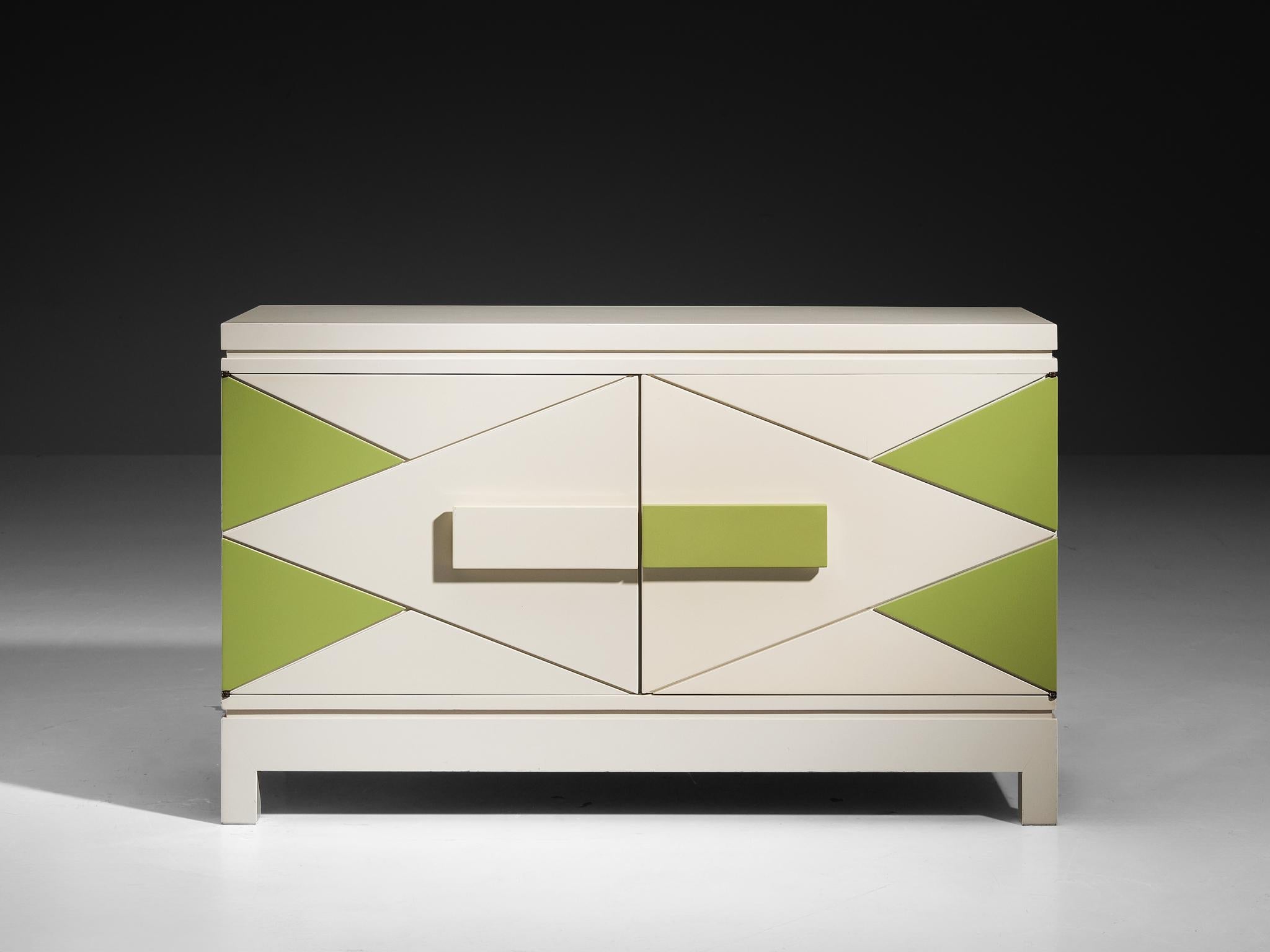
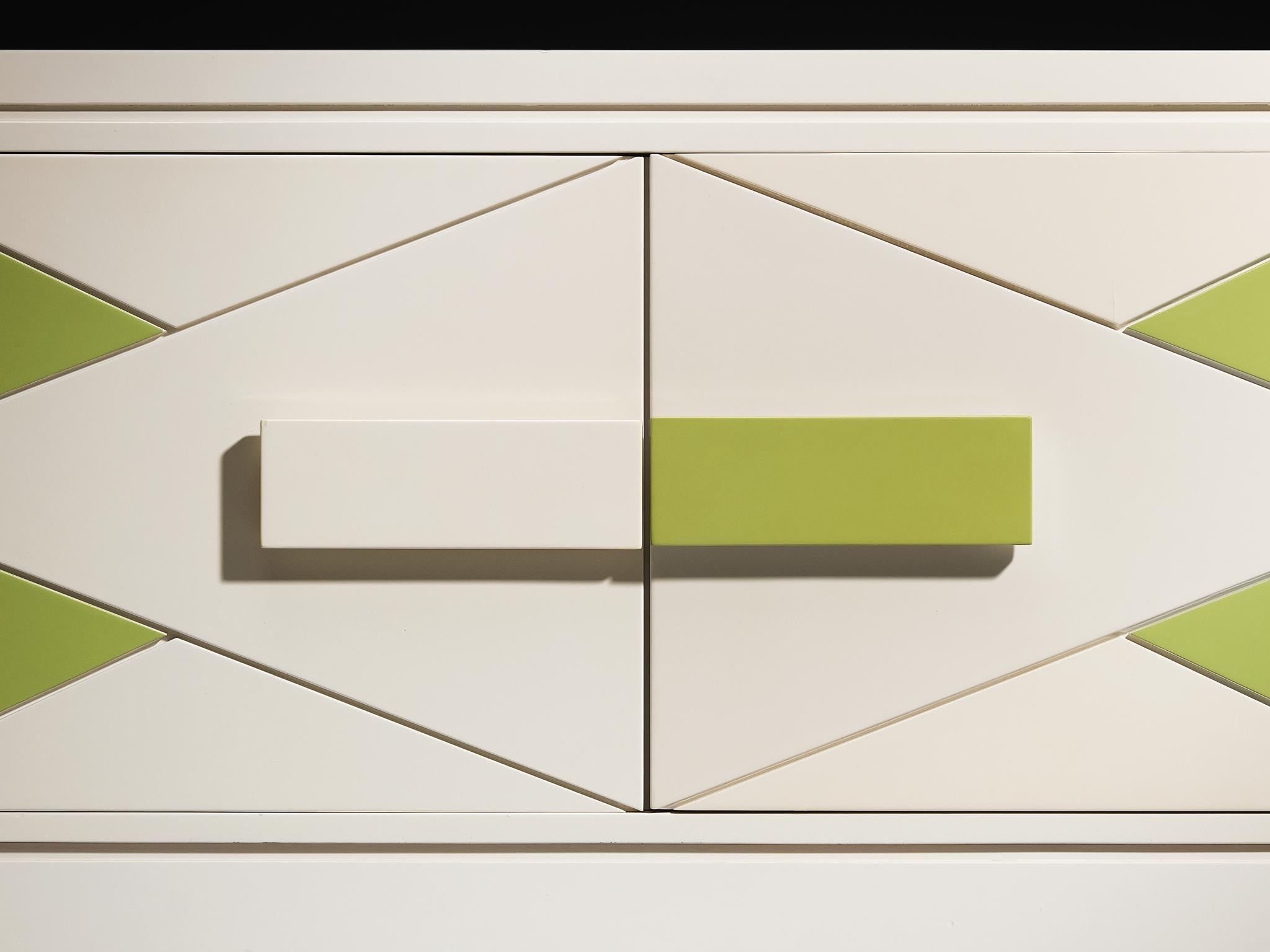
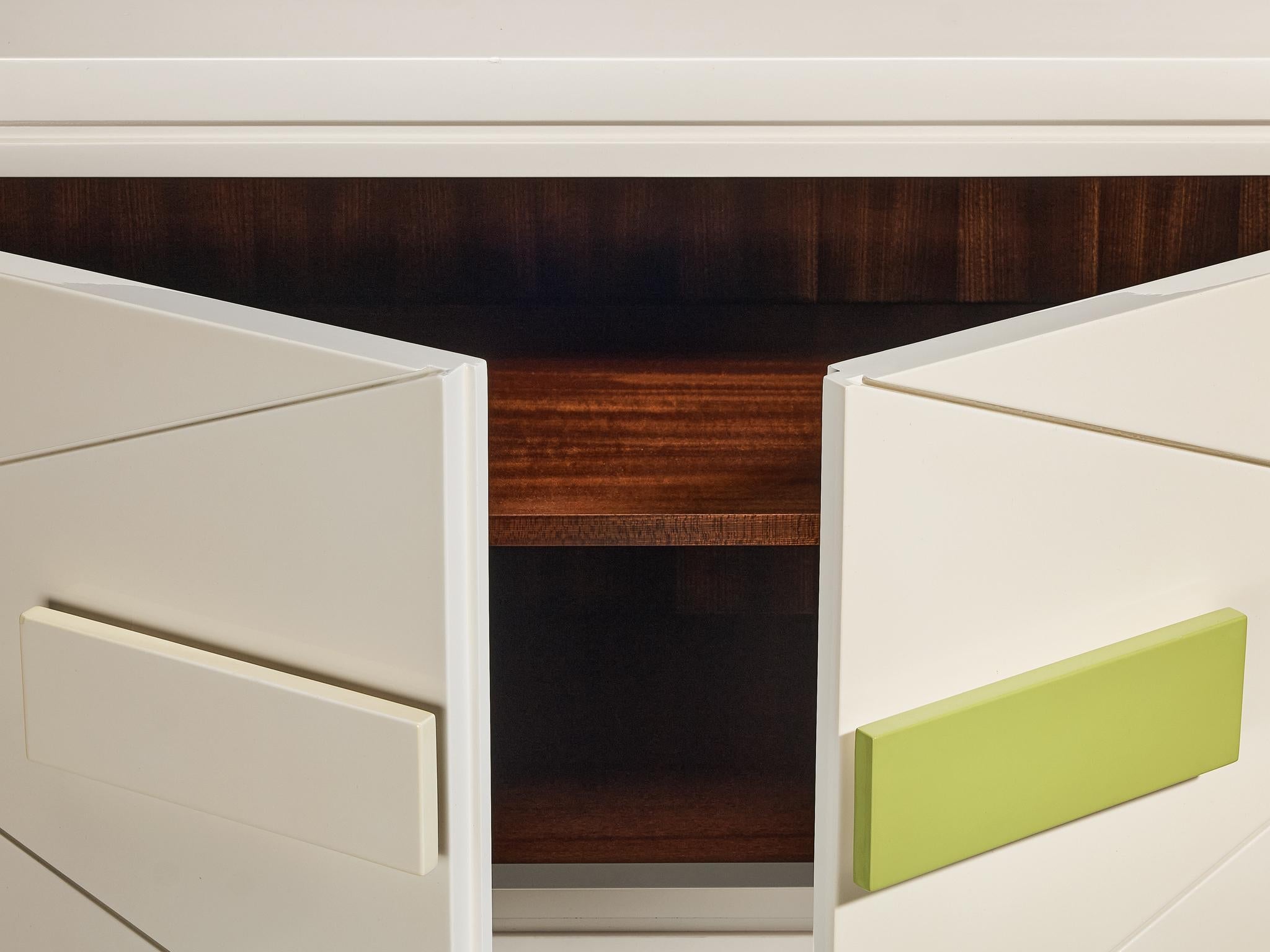
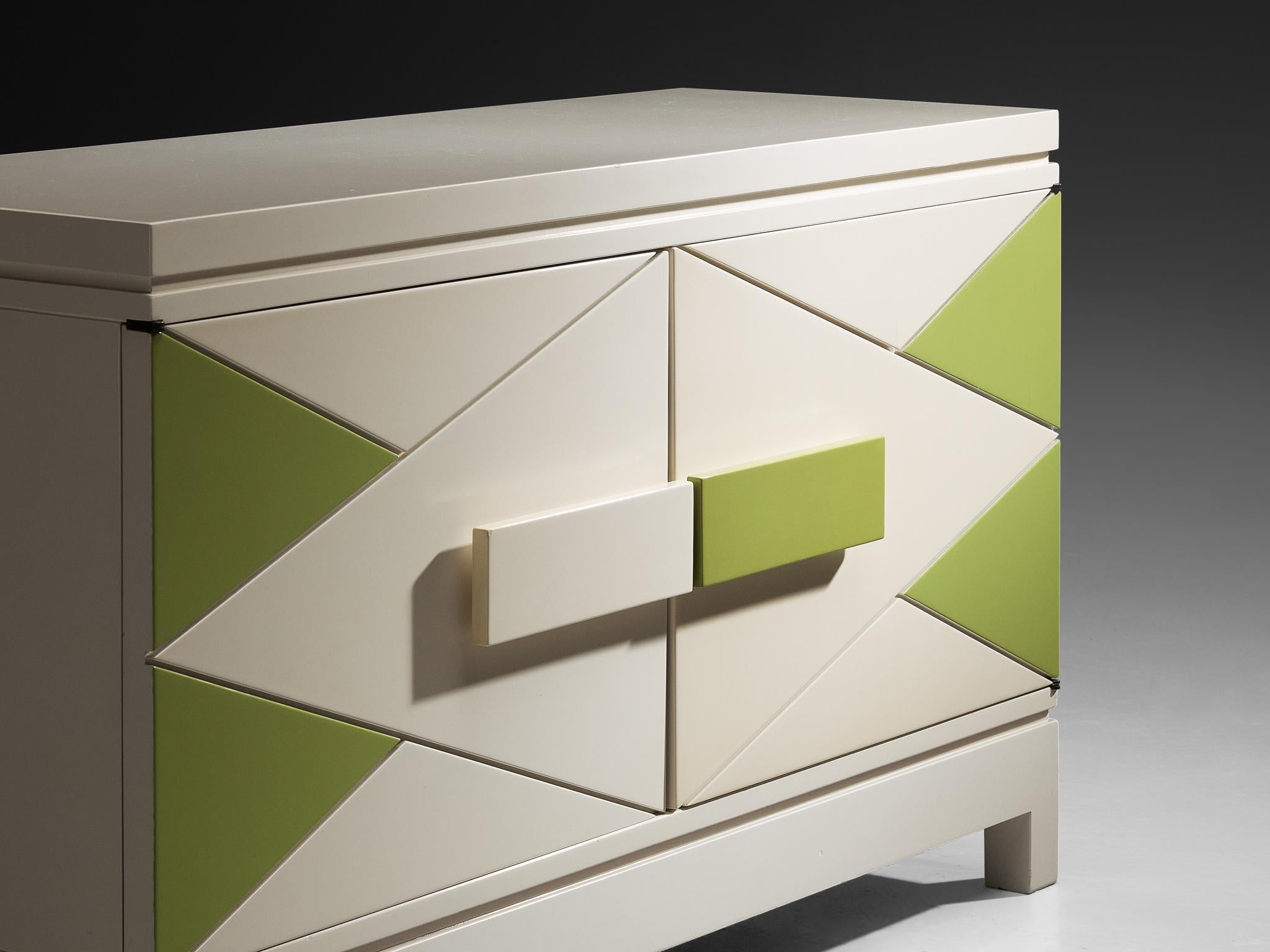
Rare Emiel Veranneman Cabinet in Off-White and Green Lacquered Wood
Emiel Veranneman, cabinet, lacquered wood, mahogany veneer, Belgium, circa 1970
Few cabinets, tables, or chairs express such a distinct identity as the design creations of Flemish interior architect, furniture designer, and art collector Emiel Veranneman (1924-2003). His work is marked by a strong sense of purpose, bold craftsmanship, and a unique context that demands attention. From the time he introduced his first "social furniture" in 1948, to his later projects, Veranneman's focus shifted from mass production towards designing exclusive, custom-made pieces for individual clients.
From the start of his career, Veranneman played with a number of defining characteristics that run like a common thread throughout his body of work. Veranneman excelled in blending geometric precision with softer, curved forms, transforming rigid squares and rectangles into flowing circles and ovals. He gave mass and volume a sense of spatial lightness while balancing asymmetry with refined elegance. His expert use of color brought subtle vibrancy to even the most solid structures, and his attention to material maximization was unparalleled. Among his most recognizable pieces are his lacquered furniture, celebrated for their striking geometric color patterns.
While studying at the National Higher Institute for Architecture and Decorative Arts (Ter Kameren) in Brussels, Veranneman developed a strong architectural sensibility that he later applied to his furniture designs, exemplified by his creation of exquisitely lacquered pieces with monumental constructions. These works are further distinguished by a graphic play of straight lines and showcase Veranneman's ability to manipulate color in a way that enhances the monumentality of each piece without compromising its simplicity. Veranneman was deeply influenced by the furniture-making traditions of 16th and 17th century China, an influence that is particularly evident in his use of lacquer. Veranneman's lacquered furniture, which he perfected through the painstaking application of multiple layers, reflects the precision and refinement characteristic of traditional Chinese craftsmanship. Each piece was often coated with up to twenty layers of lacquer, each layer requiring a ten-day drying period, resulting in a final product that took six to seven months to complete. The outcome of this method is a rich, glass-smooth finish.
Veranneman never compromised on functionality, considering it a fundamental principle in the development of his furniture pieces. In his lacquered designs, ornamentation is minimal, manifesting only through constructive elements such as subtle relief work, geometric outlines, and contrasting color fields.
His furniture could be described as radical and uncompromising – a form of expression uninfluenced by economic constraints, passing trends, or the whims of clients. His creations stand on their own, distinct and unrivaled among his contemporaries. His style is often described as "strict, serious, sober, and calm," qualities that he himself acknowledged as central to his vision. He sought balance, precision, and robust construction, all brought together with impeccable craftsmanship, which he deemed essential. His powerful, sculptural furniture pieces exude a refined sense of equilibrium, combining materiality, color, and artisanal quality in a way that reflects his deep commitment to both form and function. Veranneman's work is not just furniture, but art in its purest, most functional form.
VAT within the EU: When buying or delivering an item within the EU, VAT usually applies and will be added.
Choose options









Product Details